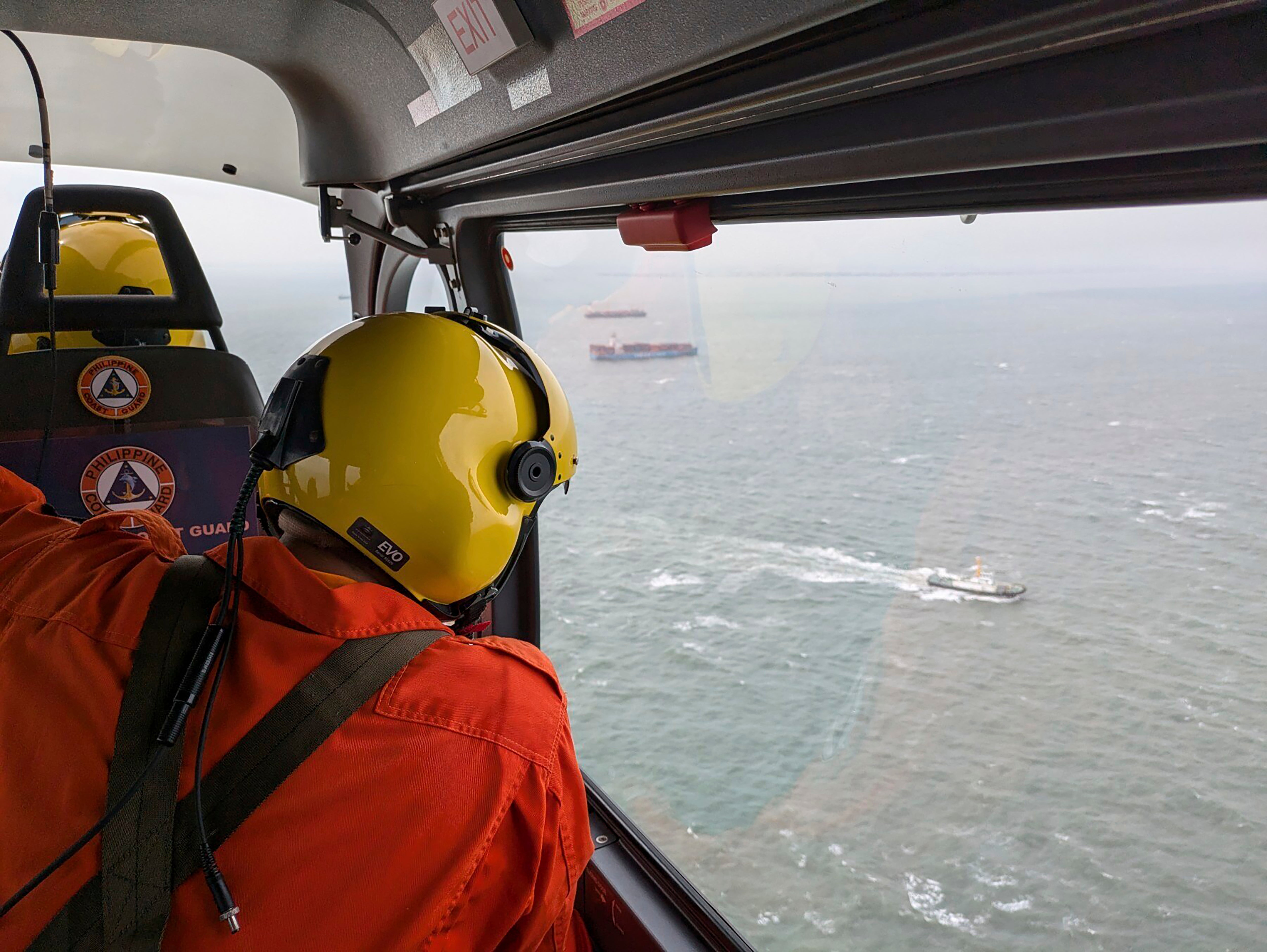The Philippine Coast Guard is trying to contain an oil spill from a sunken tanker and stop it from reaching Manila’s coastline, in a “race against time” to avert an environmental disaster.
The 65-metre (213-foot) long MT Terra NovaThe ship, which capsized on Thursday amid rough seas and heavy monsoon rains caused by Typhoon Gaemi, was carrying about 1.4 million liters (370,000 gallons) of industrial fuel oil in waterproof tanks.
The ship had left Bataan province and was heading for Iloilo in the central Philippines when it was hit by large waves and began taking on water. Despite efforts by crew members to return it to port, it sank shortly after midnight on Thursday.
A 2.3-mile (3.7-kilometer) oil slick was found about four miles (6 kilometers) off the coast of Limay, Bataan, near where the tanker sank. The Coast Guard said there was no evidence of a leak from the large amount of industrial fuel oil the tanker was carrying. But an aerial survey found a long oil spill that stretched for several kilometers and was growing rapidly.
The Coast Guard clarified that the oil slick came from the fuel tanks powering the tanker, not from cargo stored in watertight tanks.
The spill could reach the capital Manila, just 10 kilometers (6 miles) from where the ship sank. The coast guard said it planned to use floating barriers and suction hoses to suck up the toxic oil to prevent a major spill that could affect the congested capital.
The oil spill, if not contained, could be the worst in the country’s history. Initial assessments suggest the oil tanker is lying in relatively shallow water at a depth of 34 metres.
The Coast Guard is “preparing for the worst,” said Rear Adm. Armando Barilo, a spokesman for the agency. “We’re talking about industrial fuel here. It will definitely impact the marine environment and could reach as far as Manila,” he said.
The coast guard rescued 16 crew members but one drowned, Rear Admiral Barilo said. “We are racing against time to extract the oil to avoid environmental damage,” he told reporters, adding that bad weather could complicate rescue efforts.
Rear Admiral Barilo compared this potential oil spill to the one caused by the sinking of the MT. EmpressThe incident occurred in February last year when the Philippine oil tanker ” ” sank off the coast of Oriental Mindoro province, south of Manila.

but, Empress It took nearly three months to contain the spill, as the ship was carrying much less fuel oil. The incident caused extensive damage to coral reefs and mangroves in an area known for its high biodiversity, affecting tens of thousands of fishermen and beach resorts.
Manila’s coastline is a major ecological, tourist and business hub, adorned with luxury resorts, major buildings and precious flora and fauna.
Environmental group Oceana called on the Philippine government to assess the environmental impact of the oil spill, adding that “all those responsible for failing to prevent this tragedy, from the government agencies involved to the private owner of the tanker, should be held accountable.”
The spill is believed to have been caused by rough seas and bad weather, after days of monsoon rains, compounded by a typhoon passing offshore, triggered landslides and floods across the Philippine archipelago, killing at least 32 people and forcing more than 800,000 to evacuate.







